Introduction
In the crowded digital landscape of 2025, email marketing remains one of the most powerful ways to connect with prospects, nurture leads, and build long-term relationships with customers. But here’s the catch: generic, one-size-fits-all emails no longer work.
Today’s audience expects personalization. In fact, studies show that emails with personalized subject lines are 26% more likely to be opened, and personalized campaigns can drive up to 6x higher transaction rates compared to non-personalized ones.
The challenge? Personalizing emails at scale is difficult. Manually tailoring thousands of messages to individual prospects is impractical for any business. That’s where AI-powered tools come in. By leveraging artificial intelligence, companies can analyze data, segment audiences, craft custom subject lines, generate dynamic content, and optimize send times — all while maintaining a human-like tone.
This blog will give you a step-by-step guide on how to use AI tools to personalize email outreach, highlight some of the best tools in the market, and share strategies to ensure your campaigns drive engagement without crossing into the “creepy” zone of over-personalization.
The Importance of Personalization in Email Outreach
Email personalization goes beyond simply inserting a recipient’s name in the subject line. True personalization is about understanding your audience — their needs, preferences, challenges, and behaviors — and delivering content that resonates.
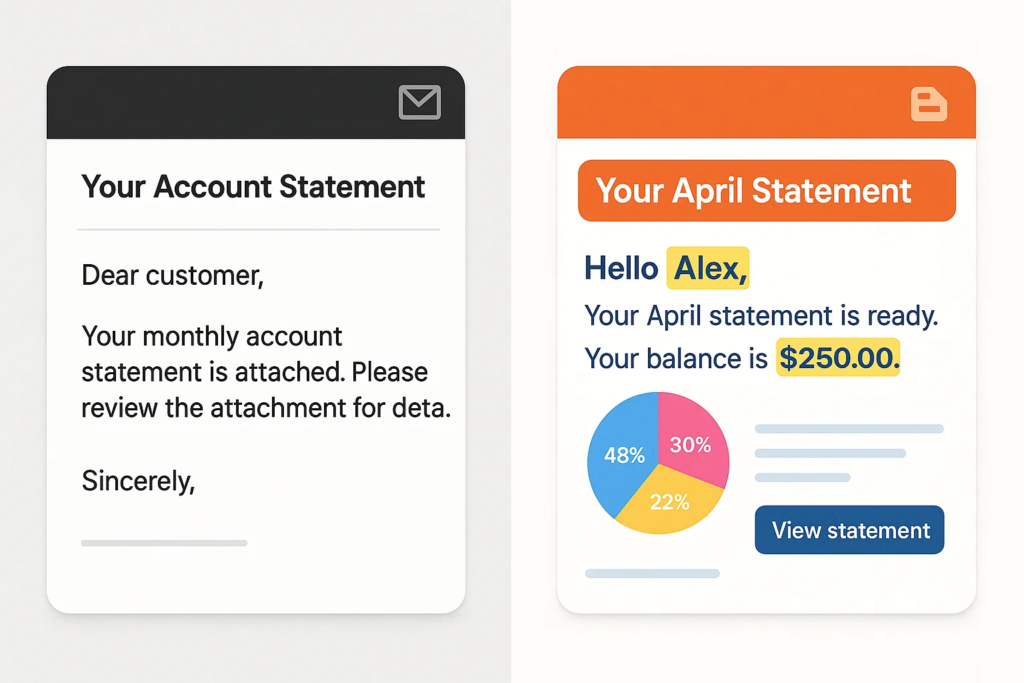
Why Personalization Matters
- Higher Engagement: Personalized emails achieve 2x higher click-through rates compared to generic ones.
- Trust & Loyalty: Customers are more likely to trust brands that “get them.”
- Competitive Advantage: With inboxes flooded daily, personalization is what makes your email stand out.
Examples
- Poor Personalization: “Hi [First Name], I see you work at [Company]. Would you like our service?”
- Effective Personalization: “Hi Sarah, I noticed your team at Acme Co. recently expanded into e-commerce. Here’s a short case study showing how similar businesses increased conversions by 27% using our AI-powered analytics.”
When done right, personalization feels natural — like you’re having a one-on-one conversation, even when emailing thousands.
The Role of AI in Personalizing Outreach
Personalization used to be limited to manual segmentation and basic merge tags. AI has transformed what’s possible.
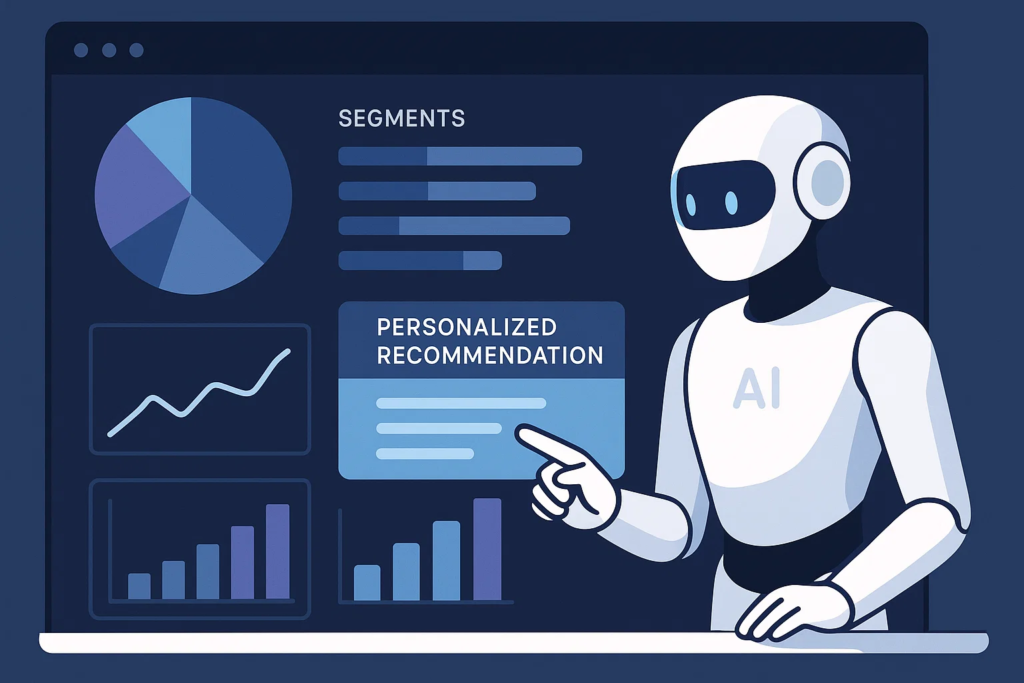
What AI Brings to Email Outreach
- Audience Segmentation: AI clusters contacts based on behavior, demographics, or intent.
- Predictive Analytics: It predicts what kind of content a recipient is likely to engage with.
- Dynamic Content Generation: AI can write subject lines, introductions, and even entire emails tailored to each segment.
- Send-Time Optimization: AI predicts the exact time an individual is most likely to open an email.
- Continuous Learning: AI improves over time, learning from past campaigns to optimize future ones.
Misconceptions
- AI ≠ Mass Automation: Good AI personalization avoids robotic, generic content.
- AI Isn’t Replacing Marketers: Instead, it augments their capabilities by handling repetitive tasks while humans ensure authenticity and creativity.
Step-by-Step Guide: Using AI Tools for Personalized Email Outreach
Here’s a practical framework you can apply immediately.
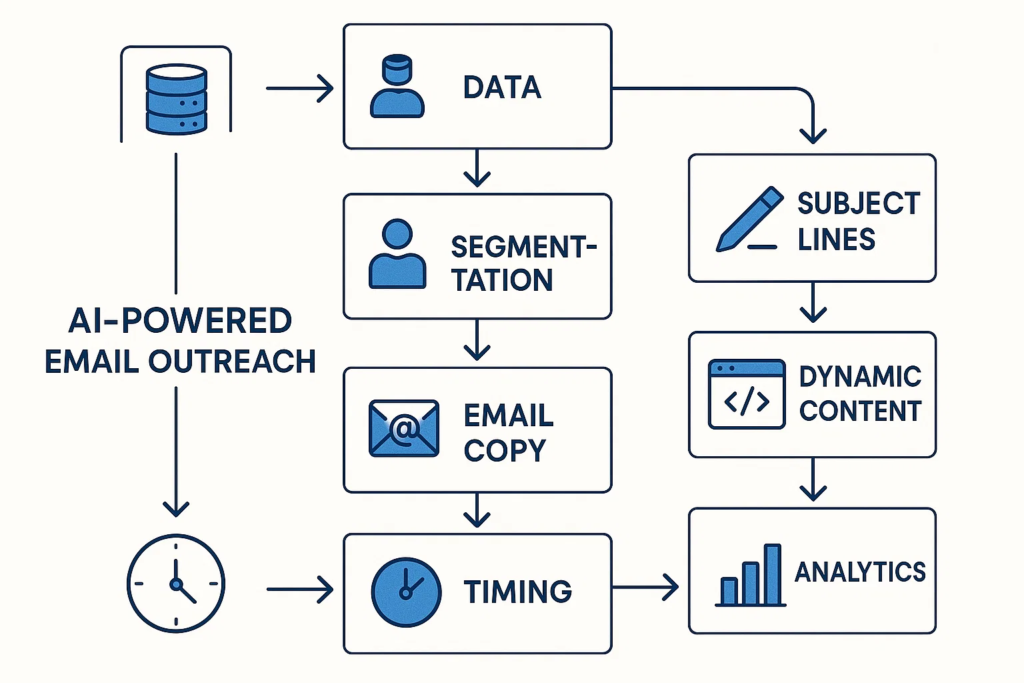
Step 1: Collect & Clean Your Data
Data is the foundation of personalization. Without accurate, enriched customer data, AI has nothing to work with.
- Collect data: Basic info (name, company, role), behavioral data (site visits, downloads, clicks), and firmographics (industry, size, revenue).
- Clean your database: Remove duplicates, fix errors, and update outdated info.
- Enrich with AI: Tools like Clearbit, ZoomInfo, or Apollo automatically fill in missing fields like job titles, company size, and LinkedIn details.
⚖️ Tip: Always respect privacy and comply with GDPR and CAN-SPAM regulations. Transparency builds trust.
Step 2: Segment Your Audience with AI
Not all prospects are the same. AI helps you create dynamic segments based on shared characteristics.
- AI clustering: Groups people by intent, behavior, or likelihood to purchase.
- Tools: HubSpot AI, Mailchimp Predictive Segmentation.
- Example: Segment A = prospects who downloaded a whitepaper; Segment B = users who visited your pricing page twice.
This ensures the right message goes to the right audience.
Step 3: Craft Personalized Subject Lines
The subject line is the gatekeeper. Without a compelling one, the rest of your personalization doesn’t matter.
- Why it matters: 47% of people open emails based on the subject line alone.
- AI assistance: Tools like Phrasee or Copy.ai generate subject lines optimized for tone, sentiment, and conversion.
- A/B testing: AI tools test multiple subject lines in real-time, automatically choosing winners.
✅ Example: Instead of “Boost Your Sales with Our Tool,” AI might suggest “Sarah, here’s how Acme Co. can drive 23% more conversions.”
Step 4: Generate Tailored Email Copy
AI excels at adapting tone and style for different personas.
- Tools: Jasper, ChatGPT, Writesonic.
- Use cases:
- Draft different email versions for C-level executives vs. technical managers.
- Generate custom opening lines based on LinkedIn profiles.
- Balance automation with authenticity: Use AI for drafts but refine manually for warmth and accuracy.
⚠️ Avoid overloading with details like “I saw your recent LinkedIn post about your dog.” That feels intrusive.
Step 5: Personalize at Scale with Dynamic Content
Dynamic content makes emails feel hand-crafted without the manual effort.
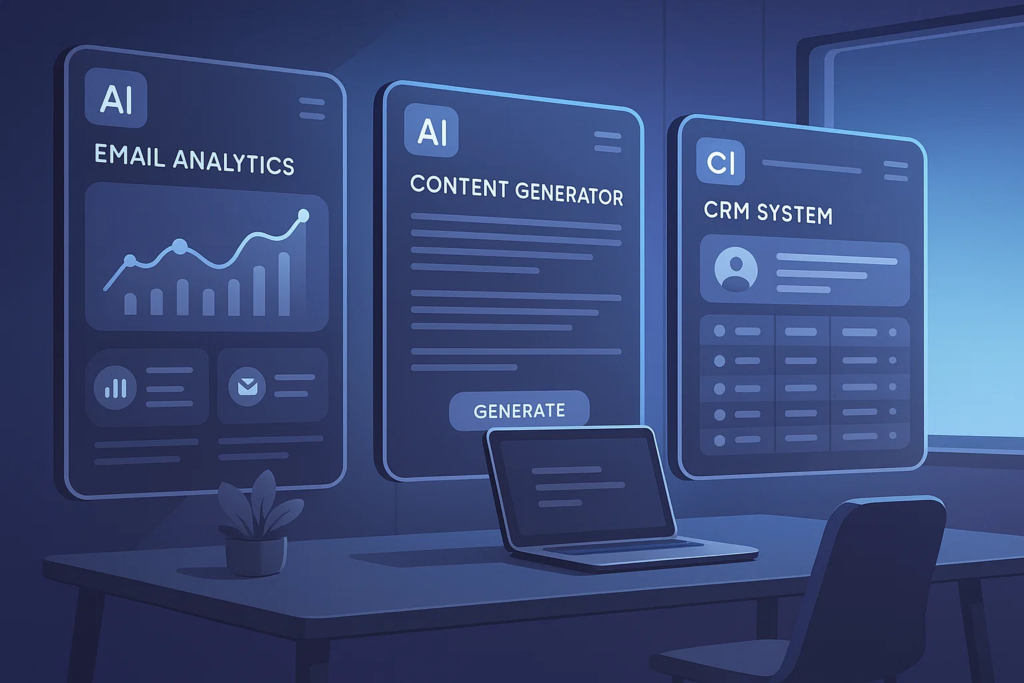
- Examples:
- Product recommendations based on past behavior.
- Local event invites based on location.
- Personalized offers tied to purchase history.
- Tools: Klaviyo, ActiveCampaign, Salesforce Einstein.
Step 6: Automate Timing & Frequency
Send an email when your recipient is most likely to engage.
- AI prediction: Tools like Seventh Sense analyze past behavior to optimize send times.
- Frequency control: AI prevents over-emailing by analyzing engagement signals.
- Example: John tends to open emails Tuesday mornings, while Sarah opens Friday afternoons.
Step 7: Measure & Optimize with AI Analytics
Personalization doesn’t stop after sending. AI-driven analytics help you refine campaigns.
- Metrics: open rate, CTR, conversions, reply rate, unsubscribe rate.
- AI insights: Suggest which subject line structures or content themes perform best.
- Tools: Drift Email AI, Gong, HubSpot Analytics.
With continuous learning, each campaign becomes smarter.
Examples of AI Tools for Email Personalization
Here are some top tools to explore:
- Jasper – AI-powered copywriting for emails.
- Phrasee – Generates and tests subject lines.
- Smartwriter.ai – Writes hyper-personalized cold outreach lines using LinkedIn & web data.
- Lemlist – Automates personalized outreach at scale.
- Outreach.io – AI-driven sales engagement platform.
- Seventh Sense – Optimizes send times.
- Klaviyo – Great for e-commerce personalization.
- Clearbit – Enriches prospect data.
Best Practices & Tips
- Keep the human touch: AI should assist, not replace human empathy.
- Avoid over-personalization: Don’t creep out prospects by referencing overly personal details.
- Test, learn, iterate: AI thrives on feedback loops — run experiments.
- Respect privacy: Transparency is key; let recipients know how data is used.
Common Mistakes to Avoid
- Over-automation: Robotic emails are a turn-off.
- Lazy personalization: “I see you’re a CEO” adds no value.
- Ignoring compliance: Violating GDPR/CCPA can be costly.
- Outdated databases: Bad data = bad personalization.
The Future of AI-Powered Email Personalization
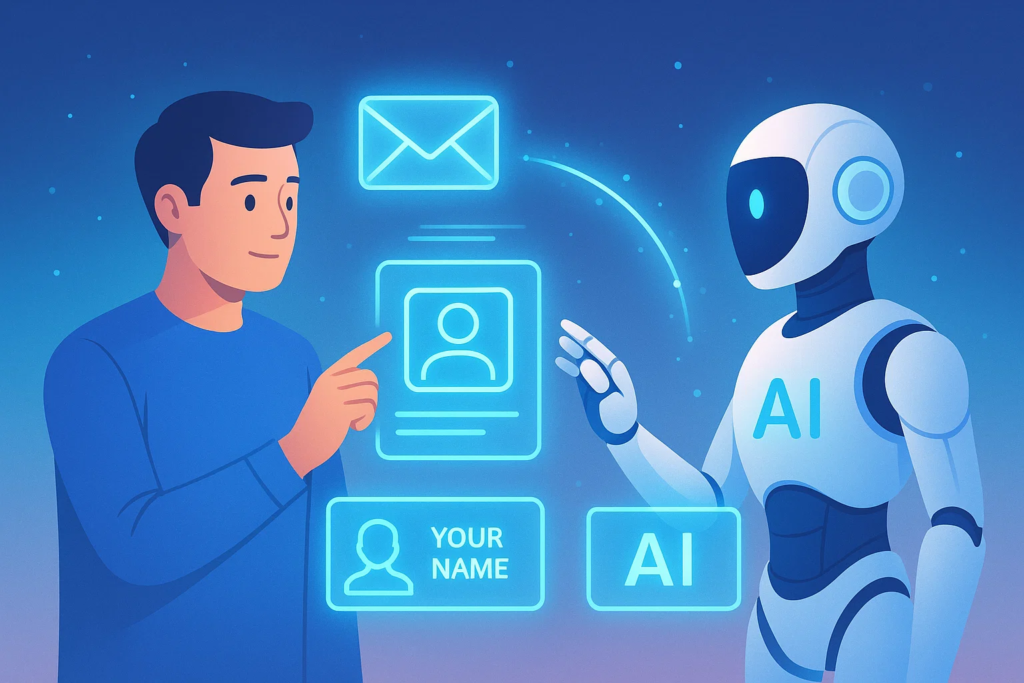
Looking ahead, AI in email will only get smarter:
- Autonomous AI agents: Running end-to-end outreach campaigns.
- Hyper-personalization: Real-time tailoring based on live behavior.
- Multimodal outreach: AI combining text, voice, and video personalization.
- Ethics at the forefront: Transparency and trust will be the deciding factors for adoption.
Conclusion
Personalization is no longer optional in email outreach — it’s the difference between being ignored and being remembered. With AI tools, businesses can scale personalization without sacrificing authenticity.
From smarter segmentation to tailored subject lines, dynamic content, and AI-driven analytics, the possibilities are endless. The key is to blend AI efficiency with human creativity, ensuring that every email feels like it was written just for the recipient.
👉 Start small: pick one or two AI tools, test them in your campaigns, and refine as you go. You’ll soon see higher engagement, stronger relationships, and better ROI from your outreach.








